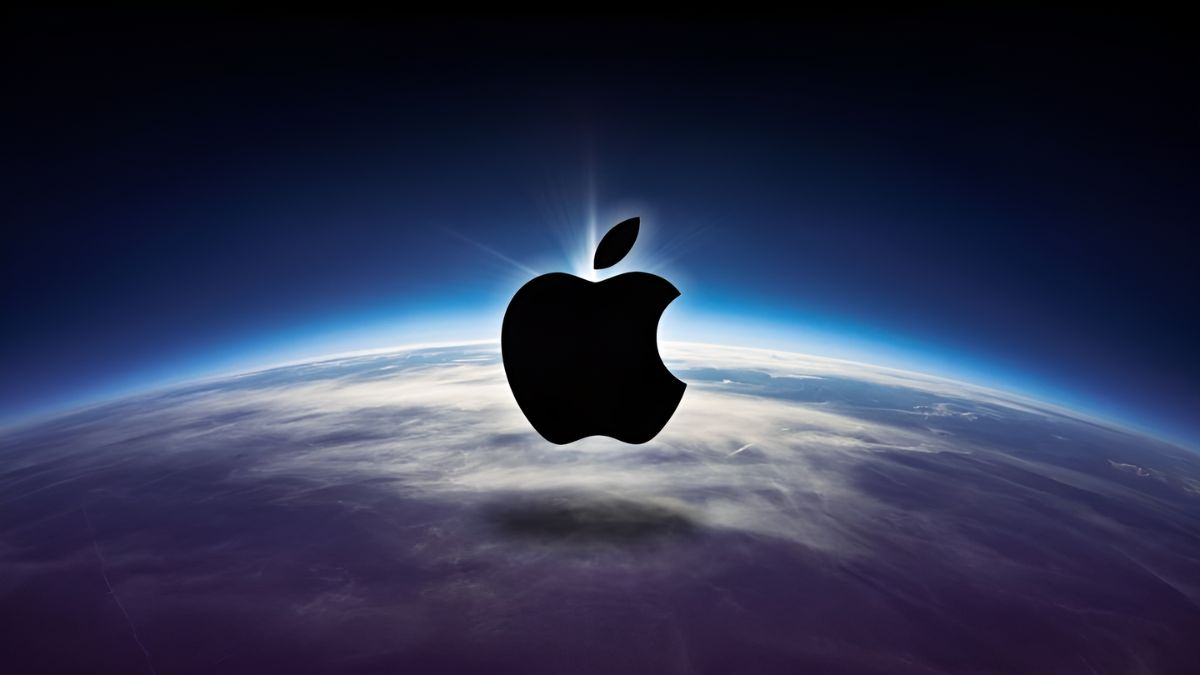APPLE VULNERABILITY DISCOVERY: THE PATH TO A $5 MILLION REWARD AND THE GLOBAL SECURITY WAR

Apple, the tech giant with a strictly secured product ecosystem, has officially made a stunning announcement to the global cybersecurity community: increasing the maximum reward for its Apple Security Bounty Program up to a record-breaking $2 million USD, with the total reward package potentially exceeding $5 million USD for exceptionally severe cases. This decision not only establishes Apple as the most generous company globally for bug hunting but also reflects the severity and complexity of current cybersecurity threats. This article will deeply analyze the significance of this enormous reward, the competitive landscape within the tech industry, and the growing critical role of the independent security research community in protecting billions of users worldwide. “Bug hunting” has officially transformed into a lucrative career, an unending race between good and evil, where every patched vulnerability is a victory for global digital safety.
Part I: Apple Declares War on the New Threat – A Record Reward
In an unprecedented move, Apple announced a bold decision: doubling the highest reward in its security program to $2 million USD. This is a significant milestone, placing Apple at the forefront of the bug bounty race, far exceeding all major competitors.
1.1. Unprecedented Generosity
The $2 million USD reward is exclusively reserved for the discovery of complex exploit chains, sophisticated techniques often used by out-sourced spyware campaigns (such as Pegasus or state-sponsored attack tools). This type of attack is the hardest to detect, often allowing hackers deep access into the operating system without any user interaction. Apple’s decision to set the highest reward at this level highlights its primary concern regarding threats from highly resourced organizations employing extremely advanced attack techniques.
However, the $2 million USD figure is merely the base reward for the highest category. Apple has also extended its potential payout with supplementary bonuses that could push the total reward to over $5 million USD. This transforms finding a critical vulnerability in an Apple product from a technical achievement into a life-changing opportunity, potentially turning a cybersecurity expert into a dollar millionaire overnight.
1.2. A Major Investment in Safety
Since the Apple Security Bounty program was launched, and particularly since 2020, Apple has not hesitated to spend money on cybersecurity. According to the official Security Research blog, the giant has paid over $35 million USD to more than 800 security researchers. The average reward recorded is around $43,750 USD, indicating that the majority of reports are valuable findings. Furthermore, many individuals had previously received payouts up to $500,000 USD before the new reward structure was introduced. These figures attest to Apple’s serious commitment to collaborating with the external community to reinforce its ecosystem.
Part II: Reward Structure Analysis – The Path to $5 Million USD
To understand how a researcher can achieve this record reward, it is necessary to analyze the detailed reward structure established by Apple. Apple has divided vulnerabilities into various categories with different payment levels, reflecting the severity, scope of impact, and technical difficulty of the exploitation.
2.1. Crucially Important Reward Categories
In addition to the $2 million USD reward for complex exploit chains, Apple specifically emphasizes and highly values attack types that have a massive impact and threaten new security features:
- Large-Scale iCloud Compromise: $1 million USD. This reward is designated for findings that can affect the security and privacy of user data on the cloud platform. With billions of devices connected to iCloud, any large-scale incident could cause a disaster in terms of reputation and legal consequences. The $1 million USD reward confirms Apple’s willingness to pay the highest price to protect its customers’ data “vault.”
- WebKit Sandbox Escape (Zero-Click): $300,000 USD. This reward is for vulnerabilities that allow bypassing the protection mechanism of WebKit (the core component of the Safari browser and many other applications) with just a single click, or even through zero-interaction attacks (zero-click).
- Near-Field Radio Attacks: $300,000 USD. These vulnerabilities relate to short-range communication protocols such as Bluetooth, Wi-Fi, or NFC. Exploiting these communication channels could allow physical proximity attacks without complex software intervention, posing a high risk in public environments.
- macOS Gatekeeper Bypass: $100,000 USD. Gatekeeper is the core macOS protection layer, ensuring that only trusted software can run. Bypassing this protection allows for easy malware distribution, which is why Apple is willing to pay $100,000 USD to patch any related vulnerability.
2.2. Encouraging In-Depth Research
Apple has also established separate reward categories to encourage research into new or especially sensitive areas:
- Lockdown Mode: This is an extreme security feature designed to protect a small number of high-risk users (such as journalists, activists). Finding a vulnerability in this mode will yield a significant payout, underscoring the importance of this feature.
- Beta Software: Rewards for finding bugs in beta software versions. This allows Apple to patch flaws before the product is widely released, minimizing risk for billions of users.
With this mechanism, a researcher can receive $2 million USD for the primary exploit chain, plus additional bonuses based on the scope and type of attack, potentially pushing the total value over $5 million USD. This reward amount is not just a sum of money but also the highest recognition of the discoverer’s technical prowess.
Part III: Competitive Landscape – The Global Security Race
Apple’s decision to increase the rewards takes place in a context where major global technology companies are fiercely competing to strengthen their defensive systems.
3.1. The Heating Up Bug Bounty Market
Apple is not alone in rewarding security researchers, but it has elevated the game to a new level.
| Company | Highest Reward (Maximum) | Additional Information |
| Apple | $2 million USD (Total reward can exceed $5 million USD) | Market leader. Has paid over $35 million USD since 2020. Focuses on complex exploit chains. |
| Up to $1 million USD (Titan M Chip) | Launched the VRP Program in 2010. Paid $11.8 million USD to 660 researchers in 2024. | |
| Meta (Facebook) | Maximum $300,000 USD | Early initiator (2011). Has paid over $25 million USD. |
| Microsoft | Maximum $250,000 USD | Lowered the participation age to 13 after a high school student submitted over 20 vulnerability reports. |
| Intel | Maximum $100,000 USD | Focuses on hardware and related software vulnerabilities. |
| AMD | Maximum $30,000 USD | Program is relatively new (launched last year). |
The clear difference between Apple’s reward and its competitors is not just the number. Apple’s $2 million USD reward suggests they are pricing vulnerabilities at the level typically paid by exploit brokers (spyware companies). In other words, Apple is attempting to directly compete with the black market, where zero-day vulnerabilities can be sold for millions of dollars to state actors or surveillance firms. Paying high rewards motivates researchers to report bugs to Apple instead of selling them externally, keeping sophisticated attack techniques out of the wrong hands.
3.2. Career Transformation: Bug Hunting to Millionaire
These attractive rewards have transformed “Bug Hunting” into a highly lucrative profession, especially for highly skilled experts. This is no longer just a side job but has become a main source of income, bringing recognition, fame, and job opportunities with leading companies. With the average reward per recipient at Google around $17,800 USD and at Apple around $43,750 USD, and the potential to reach $5 million USD, the earning potential in this field is enormous.
Part IV: Cost and Benefit Calculation – Why Companies Spend Millions
Although paying millions of dollars to researchers may seem costly, for large technology companies, it is a profitable investment, and even a form of economic defense strategy.
4.1. Cheaper Than Attack Damages
The most fundamental argument is: paying a reward to the discoverer is much cheaper than the damage caused by hackers exploiting the vulnerability. A publicly exploited security flaw (zero-day exploit) can lead to enormous consequences:
- Reputational Damage: Loss of user trust, affecting the brand.
- Financial Damage: Remediation costs, compensation, legal fines (especially under regulations like GDPR), and stock price decline.
- Data Loss: Loss of millions, even billions, of customer records and sensitive information.
In the context of increasingly sophisticated state-sponsored spyware campaigns and cyberattacks, a small software bug can be used to target crucial individuals (politicians, journalists, activists). The consequences are not limited to financial losses but also threaten personal safety and national security.
4.2. Collaborating with the “Good Guys”
Bug Bounty programs are the most effective form of outsourcing. Apple or Google cannot hire enough of the world’s best experts to constantly review their source code. By offering attractive rewards, they mobilize an unofficial army of thousands of independent security experts who constantly search for weaknesses. This is a collaborative strategy, using the collective intelligence of the global security community to create a safer shield for consumers.
Part V: Conclusion – The Future of Digital Security
Apple’s decision to raise the reward up to $5 million USD is not only a spending record but also a strategic turning point in the fight against cybercrime and threats from highly resourced organizations. It acknowledges that, in today’s digital environment, threats have moved beyond individual hackers and become a global security issue.
This immense reward affirms the indispensable role of independent security researchers. They are the silent warriors who have turned “bug hunting” into a highly profitable profession. This creates a positive cycle: higher rewards attract more talent, leading to the discovery of more vulnerabilities, and ultimately creating safer products for the end-users.
In the future, it is predictable that other technology companies will have to adjust their reward levels to compete with Apple’s generosity. The bug bounty race has heated up. And in this battle, end-users are the ones who benefit the most from increasingly reinforced safety and privacy. Finding a security vulnerability in an Apple product is no longer just a technical achievement but has become the official path to fame and fortune in the 21st century.

